In Paris, We All Drive Caddies
 04.21.2012
04.21.2012  A photograph of centrist presidential candidate François Bayrou adorns a supporter's caddy at the Bastille marketplace. Bayrou is expected to get around ten percent of the vote in the preliminary round of voting April 22, and could be a spoiler in the May 6th second round, if he endorses the right-wing Sarkozy instead of the Socialist Hollande.
A photograph of centrist presidential candidate François Bayrou adorns a supporter's caddy at the Bastille marketplace. Bayrou is expected to get around ten percent of the vote in the preliminary round of voting April 22, and could be a spoiler in the May 6th second round, if he endorses the right-wing Sarkozy instead of the Socialist Hollande.
When we lived in Los Angeles, where we had to drive to get anywhere, Richard would refer to our car as the two-ton backpack. We'd strap on the two-ton backpack to go shop at Whole Foods in El Segundo, or schlep to Home Depot on Jefferson Boulevard, or to bring home a stack of books from Small World Books on the Venice boardwalk.
Here in Paris, we have no car. Don't need one; don't want one; don't miss one.

But we still go to shop, at any of three long-established local fresh produce markets that are within walking distance, or either of two supermarkets, any of three local pharmacies, any of three hardware stores, the shoe repair shop, four good bakeries, three butchers, the dry cleaners, etc. The neighborhood survives here, and so (fingers crossed, Paris is also being gentrified) do the small shops that help give a neighborhood character and convenience.
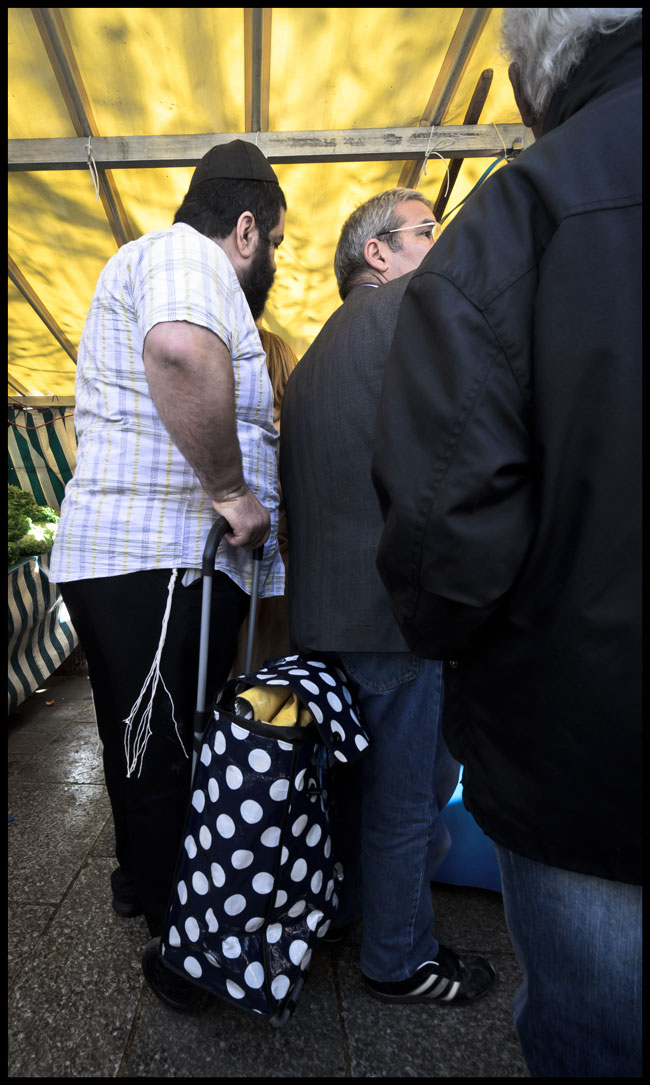
And, like everyone else here, we drive a caddy.

If you've been where the urban poor and aged live in the United States, you've seen these caddies, sort of a laundry hamper on wheels, used to tote necessary goods if one doesn't have a car. And in really sad cases, some people's caddies are large stolen metal shopping carts that serve to hold the only possessions they own.
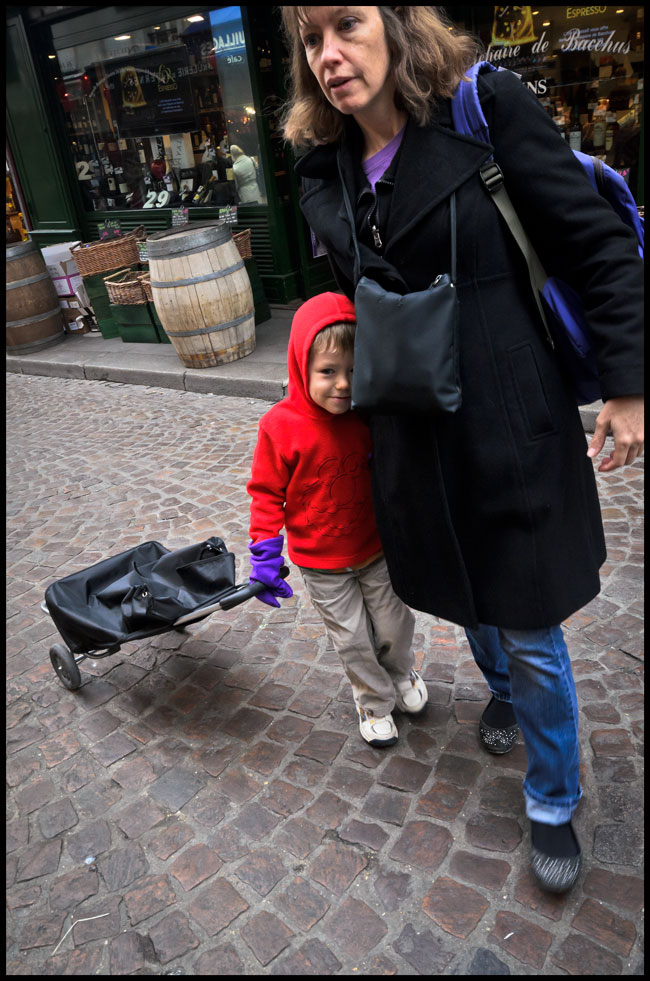
Here in Paris, there's no social stratification; caddies are not the sole preserve of the aged, the poor, or the homeless; we all drive them, rich, poor, male, female, old, young, Muslim, Christian, Jew--name your demographic, and you drive a caddy.

Many come in Henry Ford's basic black (our choice; we're not flamboyant), but you can find one at the department or hardware store to suit just about any taste, from polka dots, to Tartan plaid, to laminated posters of Ganesha.


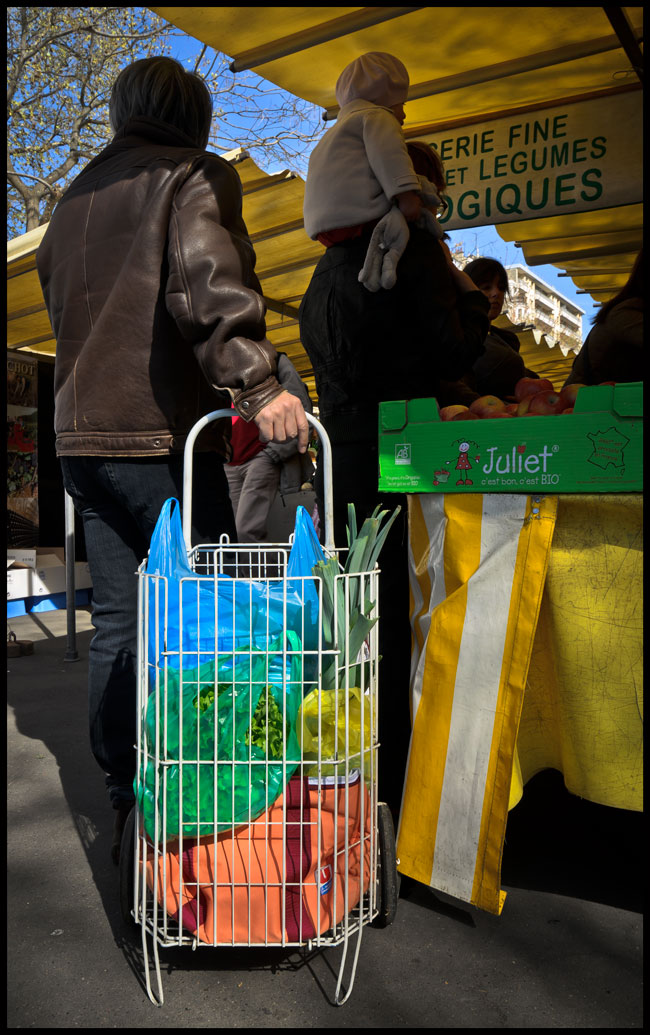
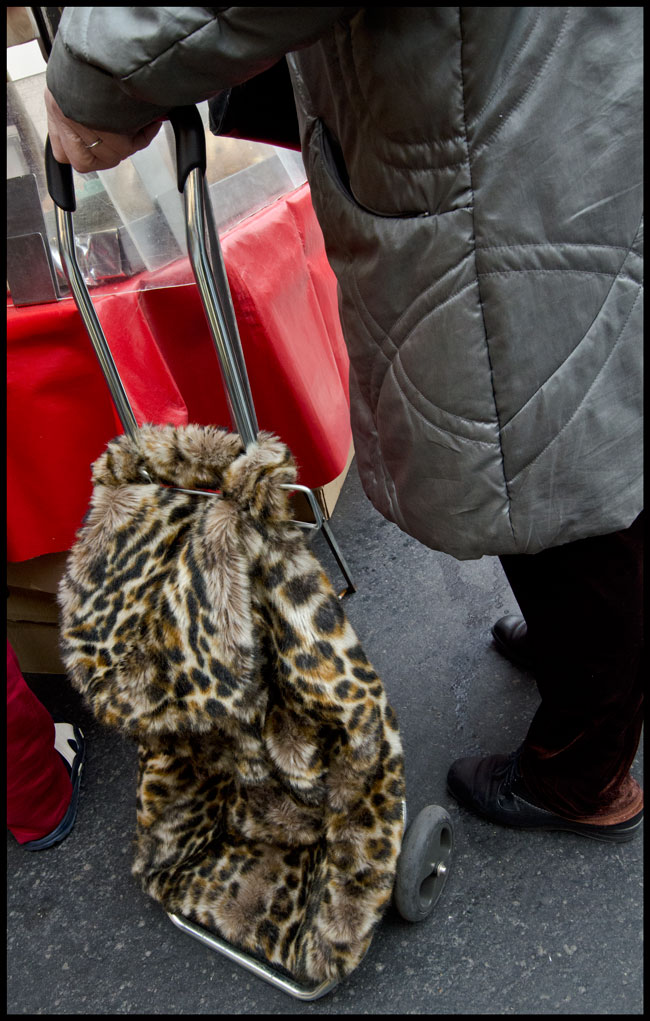


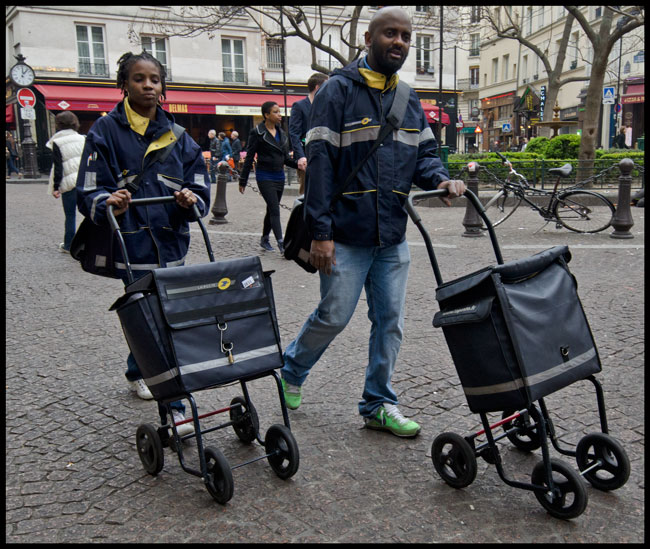 Even postal service letter-carriers drive caddies.
Even postal service letter-carriers drive caddies.
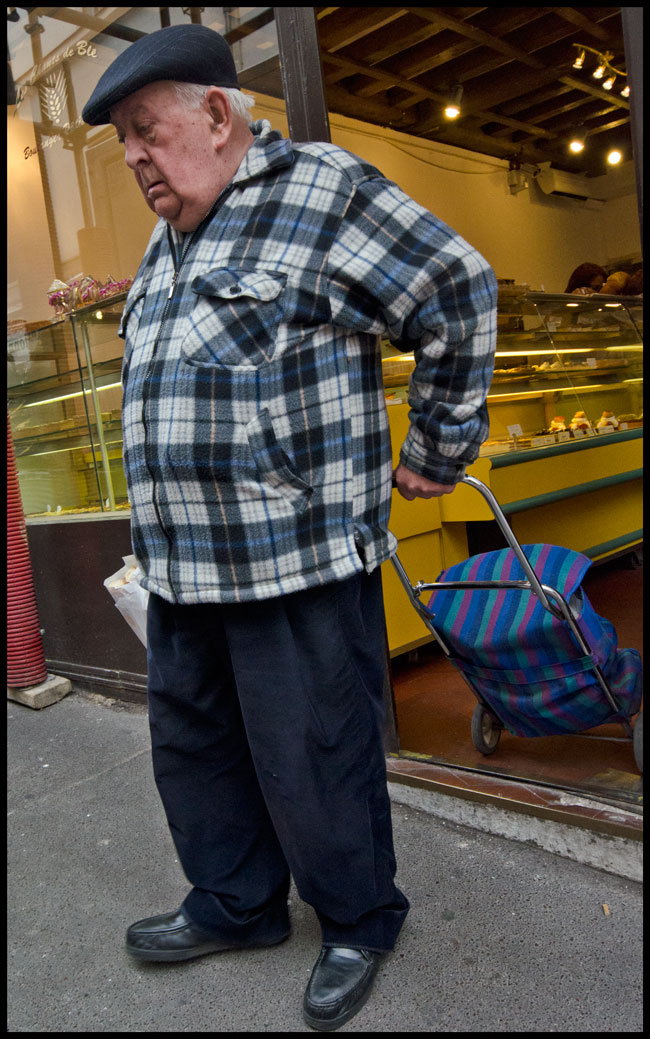

And, reflecting another social difference between Paris and Los Angeles, we don't lock our caddies when we go to the store. People leave them outside, or queue them up at the market entrance while they shop. Yes, we leave them unattended, in a city of 2.5 million people.

 caddies,
caddies,  elections,
elections,  fashion,
fashion,  shopping in
shopping in  Paris Life
Paris Life 
